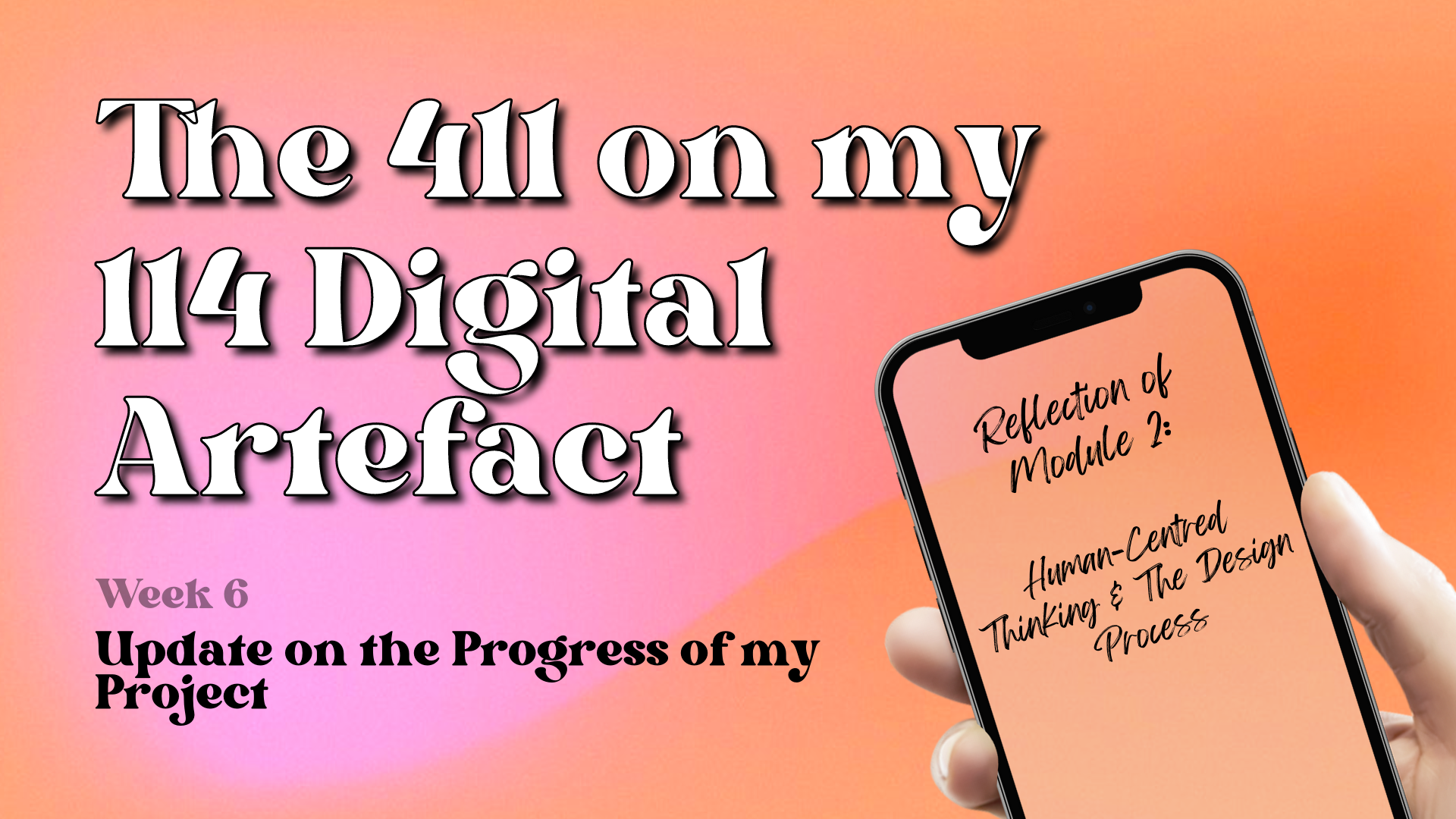4/9: WEEK 6 UPDATE

Before reading, I encourage you to watch my pitch video for context:
A GENERAL UPDATE ON MY DIGITAL ARTEFACT
Following the release of my pitch, I have been busy putting my plans into action through the development of my TikTok account, ‘TheDailyAllie‘.


So far, I am quite happy with the trajectory of my DA. I have uploaded several videos to TikTok which have performed better than I expected.
Since starting my DA earlier this year in BCM112, I have observed a growth in my account’s engagement this Semester.

Apologies for the poor image quality- my Twitter account was
suspended so I can only access screenshots of my tweets

As part of my project’s progression, I have worked closely with concepts explored in the module, ‘Human Centred Thinking’, to create content as a form of problem-solving.
In this blog post, I will reflect on my use of human centred thinking and the design process within the development of my Digital Artefact.
HUMAN CENTRED THINKING AND THE DESIGN PROCESS
Embracing human-centred design means believing that all problems are solvable, and that the people who face those problems everyday are the ones who hold the
THE FIELD GUIDE TO HUMAN-CENTRED THINKING, IDEO
key to their answer.
In media making, human centred thinking empowers us to come up with innovative solutions that meet the core needs of those who experience a particular problem.

Exploring the concept of Human-centred and the design process thinking has played a major role in the developmental trajectory of my project, The Daily Allie.
WHAT IS THE DESIGN PROCESS?
As part of human centred thinking, the design process is a non-linear, iterative approach to problem-solving. It is a methodology which helps us articulate a deeper understanding of people and their needs, scrutinise the problem at hand, and ideate, prototype and test potential solutions.
“[The design process] is about cultivating deep empathy with the people you’re designing with; generating ideas; building a bunch of prototypes; sharing what you’ve made together; and eventually, putting your innovative new solution out in the world.“
Tim Brown, IDEO

HOW I HAVE APPLIED THE DESIGN PROCESS TO MY DIGITAL ARTEFACT:

The development of my DA so far has acted in accordance to the ‘analysis’ and ‘synthesis’ stages of the feedback loop, which involves the continuous cycle of empathising, defining, ideating, prototyping and testing content.
Using ‘An Introduction to Design Thinking’ as a guide, I can map significant moments in my project’s development with correlation to the different stages of the design process.










The design process is iterative, meaning the results generated are often used to redefine the problem, re-evaluate ideas and retest prototypes.


My application of audio memes in my DA saw higher engagement than other content I had previously posted, resulting in an iteration to my design process.
LINKED: https://vt.tiktok.com/ZSRmXXUAB/

REFERENCE LIST:
- Dam, RF n.d., The 5 Stages in the Design Thinking Process, The Interaction Design Foundation.
- IDEO 2015, The Field Guide to Human-Centered Design.
- Plattner, H & Institute of Design at Stanford n.d., An Introduction to Design Thinking PROCESS GUIDE.

